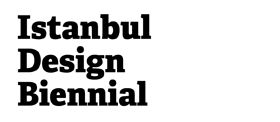
One of the two exhibitions at the Istanbul Design Biennial is Adhocracy, hosted in the Galata Greek Primary School’s 2,300 square metres. Reuniting over 60 projects by 120 designers, architects, “Adhocracy”, curated by Joseph Grima in collaboration with an international curatorial team, surveys the contemporary design scene in the wake of a wave of social and technological revolutions that have transformed the realm of design in recent years. The exhibition argues that rather than in finished products, the maximum expression of design today is to be found in processes—systems, tools, networks and platforms that involve users in the process of definition of the end product. The exhibition charts the migration of the epicentre of production from the factory floor to back to the craftsman’s workshop. The title, Adhocracy, is a reference to the move away from the dominance of the bureaucratic model of organization, typical of the industrial era, towards an approach that embraces bottom-up innovation.

Projects on display range from a selection of innovations curated by festival of creative ad-hoc production Maker Faire Africa, to the Imagine project by Mexican artist Pedro Reyes, where confiscated illegal guns are transformed into musical instruments. The Belgian open source platform OpenStructures presents the new OS Toys, developed in collaboration with some of Istanbul’s artisans, and French super-secretive hacker collective Les UX takes over the venue’s terrace to exhibit for the first time the film Panthéon: Mode d’Emploi. A 10 x 15 meter suspended 1:750 scale model of the center of Istanbul dominates the entrance of the exhibition, displaying a new, specially commissioned project by French-Hungarian architect Yona Friedman. In his first encounter with Istanbul, Friedman proposes The Haliç Center, a design for the city threading the Golden Horn, with bridges supporting an enormous structural network.Haliç Center, a special project envisioning a city threading the Golden Horn, will be followed by a series of other interventions curated by Maurizio Bortolotti on the scale model of Istanbul by artists and architects such as Tomás Saraceno, Boğaçhan Dündaralp, Ömer Kanipak, Cevdet Erek and Gabriele Basilico.

Adhocracy also features especially commissioned projects by Minale-Maeda, Carlo Ratti, Unfold, Cohabitation Strategies, Jesko Fezer, Basurama, Recetas Urbanas, Wikitankers, Memory 9, GG Lab, Orkan Telhan, HS Mimarlik, Boğachan Dündaralp and Superpool, alongside new projects by Aristides Antonas, Tristan Kopp, and Lorenza Baroncelli. The exhibition also seeks to demonstrate that the roots of the ideas explored in this exhibition run deep. Adhocracy revisits the work of Italian architect, professor and author Giancarlo De Carlo, as well as other luminaries such as John Habraken and Johan van Lengen. It also looks towards the future of open source design and P2P with projects by Arduino designer Massimo Banzi, Enrico Bass—devices which speak of the future developments in technology. Considering the Istanbul Design Biennial as a laboratory rather than an exhibition platform, Adhocracy attempts to challenge traditional definitions of design, showcasing works that question the value of labor, the nature of intellectual property, the ethics of consumption, the limits of technique, and the order of power.









By emel
August 26, 2013 2:55 AM
http://blog.milliyet.com.tr/istanbul-tasarim-bienali-ve-kitliktan-esinlenmek/Blog/?BlogNo=387781
By Google
September 12, 2014 1:00 AM
Using Ancient Rome 3D in Google Earth, you can explore Rome as it
appeared in 320 A. * Let you know there are things you can do to improve y0ur ranking.
Any time you create new content or share new links
on your website or blog, be sure to do so by diversifying all of the link and anchor text you implement, regardless of
the market you represent or the industry you are working in.